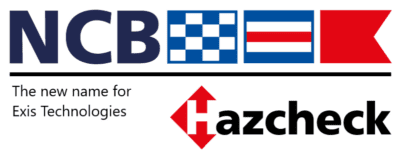A holistic approach to safety: addressing the carriage of non-compliant dangerous goods – Forwarder Magazine Issue 56
An increasing number of containership incidents are being caused by poorly stowed, undeclared or misdeclared dangerous cargoes. Nine major containership fires were reported in 2019 resulting in tragic loss of life, significant damage to vessels and cargoes, and a range of other associated consequences. The increasing number of containers being carried coupled with the trend for larger containerships is exacerbating and concentrating this risk.
The Ultra Large Container Carrier (ULCC) Maersk Honam with a capacity of 15,266 TEU caught fire on 6 March 2018. 27 crew were on board and 7,860 containers were stowed. Tragically, five crew members lost their lives. The cause of the fire has not been determined, but it is suspected that undeclared or misdeclared DG cargo was involved. According to TT Club data on average a containership is involved in a major fire every 60 days.
Reasons are varied and include the difficulty of supply chain stakeholders complying with a myriad of regulations; a poor understanding of what constitutes a dangerous cargo and what is required to transport it; the increasing complexity of multi-modal supply chains; carriers and ports restricting or refusing to move or receive certain dangerous cargoes; varied internal company challenges; and the continuing threat of bad actors.
A White Paper from the National Cargo Bureau is calling for urgent reform and offers a way forward for enhancing industry-wide compliance and safety. It recommends a comprehensive, holistic dangerous goods programme that sets a high, minimum bar for achieving regulatory compliance requiring a robust internal safety culture with strong management backing.
The growing spread of undeclared and misdeclared DG
Last year, NCB conducted 32,387 DG container (dry and tank) inspections in the USA and found that 7.9% of these units (equating to 2,569 containers) were noncompliant due to poor stowage/securing; misdeclared cargo or other related issues. NCB recently spearheaded a Container Inspection Safety Initiative (CISI) involving the inspection of 500 containers from participating carriers. These inspections included DG and non-DG import loads from Latin America, Europe, Asia and Middle East as well as export loads involving shippers that had not previously been exposed to container inspections. The objective of this initiative was to quantify the level of danger that exists on every voyage caused by misdeclared or insufficiently secured cargoes. It is intended that this will act as a catalyst for increased container inspections globally, increased safety awareness and regulatory compliance of shippers, freight consolidators and export container packers; and ultimately a reduction in shipboard incidents due to non-compliance with DG regulations.
55% of inspected containers failed to comply including 43% for poor securing of cargo within the container.
Approximately 6.5% of the DG containers contained DG cargoes that had been misdeclared. Interestingly, for DG containers exported from the USA, the failure rate was 38% which, when compared to the annual average of 7.9% for regular inspections, may be a strong indication that shippers and consolidators are more likely to comply with applicable regulations if there is a reasonable chance their shipment will be inspected.
Startlingly, 2.5% of inspected imported DG containers were found to include misdeclared cargoes that represented a serious risk to crew, vessel and the environment. When extrapolated to the 5.4million2 DG containers shipped annually, the potential risk to life, vessel, cargo and the environment is unacceptably high and hard to ignore.
Recommendations
NCB recognize that container vessel operators bear a disproportionate level of the risk associated with the carriage of non-compliant dangerous goods and have developed a list of 12 recommendations to assist shipping lines with this issue. Exis Technologies, part of the NCB Group, has been working closely with NCB to help to develop tools that address several of NCB’s recommendations.
Incorporate integrated digital tools that automate critical compliance functions
Hazcheck Detect is a new cargo scanning tool that scans all booking details for keywords, validates against rules and highlights suspicious bookings to identify misdeclared and undeclared dangerous goods (DG). Currently, the system has around 4,500 mis-declared rules and 10,000 undeclared rules available. The rules are continually enhanced and will evolve using machine learning and AI techniques. Maersk are the first customer signed to the Hazcheck Detect solution.
Establish a compliant DG training programme
IMDG Code e-learning (39-18) is online training for all shore side staff involved in the shipment of dangerous goods by sea. We offer several levels of training including general awareness, function specific and advanced. The courses are used by 6 of the top 10 container lines and are approved by several competent authorities worldwide, We also offer Container packing and Tank Container courses.
For further information on National Cargo Bureau’s holistic approach, including their 12 recommendations and potential solutions to assist in the development of a robust DG programme can be found here: www.natcargo.org/Holistic_Approach







